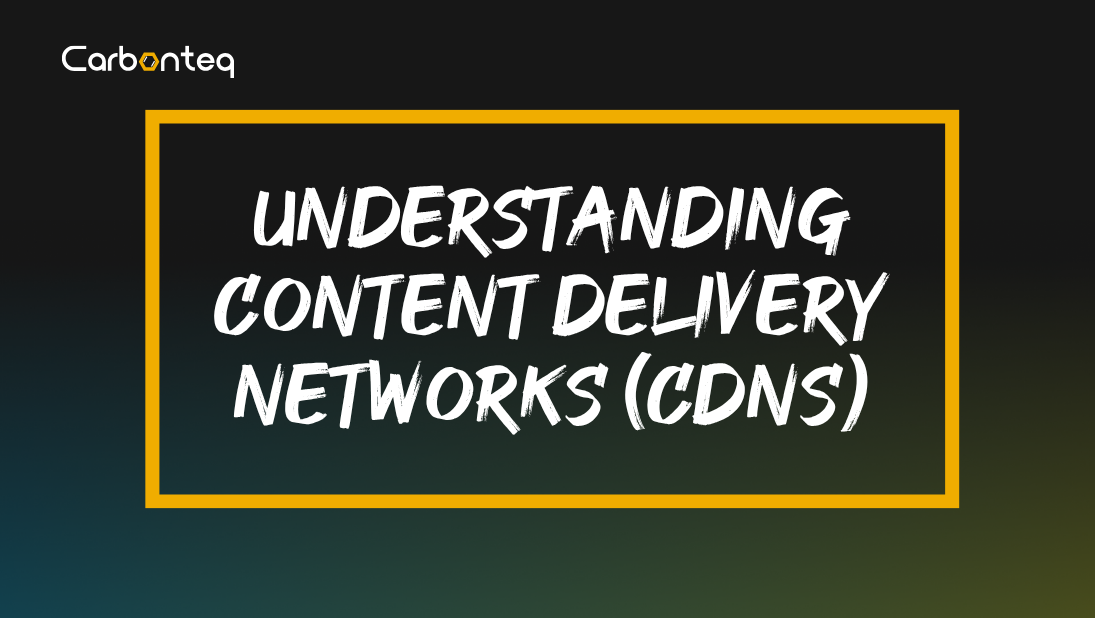Understanding Content Delivery Networks (CDNs)
Content Delivery Networks (CDNs) can be used to improve a business’s conversions by improving website load times, reducing bandwidth costs, and increasing content availability and redundancy.

Introduction
In today’s digital age, where seamless access to online content is crucial, traditional hosting methods struggle to efficiently deliver web content globally due to high latency, scalability limitations, and reliability concerns. Website performance directly impacts a business’s conversion rates. Studies show that a user is more likely to complete the intended action on a webpage if it loads more quickly. On the contrary, slow load times for websites lead to a loss in revenue for businesses. As per this research:
- Walmart found that for every 1-second improvement in page load time, conversions increased by 2%.
- BBC discovered that they lost 10% of their total users for every additional second it took for their pages to load.
- Retailer AutoAnything experienced a 12-13% increase in sales after cutting page load time in half.
- Mobify found that decreasing their home page’s load time by 100 milliseconds resulted in a 1.11% uptick in session-based conversion.
Content Delivery Networks (CDNs) can be used to improve a business’s conversions by improving website load times, reducing bandwidth costs, and increasing content availability and redundancy.
What is a CDN?
A Content Delivery Network (CDN) is an interconnected network of dispersed servers that provides users with access to digital assets and web content according to their geographical location. Reducing latency—the amount of time it takes for data to flow from the server to the user—is the main objective of a content delivery network. CDNs provide more dependable and quicker load times by caching content closer to the end consumers, as depicted in the figure below.
Internet Exchange Points (IXPs)
CDNs are deployed at Internet Exchange Points (IXPs) for several strategic reasons, all aimed at improving the efficiency, speed, and reliability of content delivery.
Internet Service Providers (ISPs), CDNs, and other network operators connect and exchange Internet traffic at IXPs, which are physical infrastructure locations. An IXP's main goal is to make it easier for various institutions to exchange data directly, which will increase the effectiveness and speed of data transfer across the internet.
Case Study: Netflix’s Open Connect CDN
Netflix, a leader in the world of streaming entertainment, has revolutionized content delivery with its own CDN, known as Open Connect. Let's examine how Netflix has improved its service by utilizing this technology.
Background
When streaming first started, Netflix relied on other CDNs to distribute its content. However, the need for more effective content delivery increased along with the platform's growth. 2012 saw the launch of Netflix Open Connect, a specially created CDN intended to enhance consumers' streaming experiences.
Open Connect Appliances (OCAs)
Netflix refers to their CDN servers as Open Connect Appliances (OCAs). These OCAs are deployed at IXPs around the world to optimize geographic coverage. To guarantee that content gets cached close to a sizable population of Netflix users, IXPs are selected based on their traffic volume handling capabilities and strategic placement. These strategically deployed OCAs drastically improve streaming performance.
Consider the figure above where a user connected to ISP A can just stream the desired content directly from the OCA located at their nearest IXP, avoiding the need to reach out to the origin server and reducing latency.
Netflix Partnership with ISPs
Netflix partners with ISPs to host OCAs inside ISP facilities, going beyond simply deploying OCAs at IXPs. Faster streaming and reduced latency are the outcomes of this tighter integration, which reduces the distance data must travel. Additionally, keeping Netflix traffic inside the ISP's infrastructure lessens network congestion on external networks, enabling a more dependable and stable streaming experience, as shown in the figure below.
You can learn more about this topic here.
Types of OCAs
Netflix has three types of OCAs.
- Flash: Fastest appliances with a raw storage capacity of up to 24 TB and operational throughput of ~190 Gbps. These appliances help scale network delivery for large sites.
- Storage: With the highest raw storage capacity of up to 360 TB, these appliances are used to hold the Netflix catalog at IXPs and larger ISP facilities. They have an operational throughput of ~96 Gbps.
- Global: The cheapest of the three, these appliances are used for smaller ISPs and regions with developing network infrastructure. They have a raw storage capacity of up to 120 TB with an operational throughput of ~18 Gbps.
How content is transferred onto the OCAs
Step 1
Netflix has a fixed catalog of shows and movies that are available for consumption in a region. They also utilize predictive analytics to decide which content will be popular in different regions. This regional content is pushed every day onto the OCAs located at IXPs during off-peak hours (usually late at night). Setting the fill window this way allows the system to continue to download updates and serve clients without negatively impacting playback performance.
Step 2
Local OCAs (OCAs located at ISP facilities) then download the content from the IXP OCA through peer filling. This way content is more widely available across different OCAs, reducing the chances of cache misses and improving the likelihood that content is served from a nearby location.
Step 3
Cache-Control keeps a thorough log of the content that is kept on each OCA. A user's request for a specific piece of content is routed to the relevant CDN URL by CODA, which works with Cache-Control to identify the best possible source for that content. This ensures that the content is fetched from the most optimal location, minimizing latency and maximizing streaming quality.
Content Distribution Algorithm
Netflix uses a variety of servers (flash, storage, global), each with unique features. Uniform distribution of material would not work well in their system because server heterogeneity adds another degree of complication.
To tackle this problem, they have created an approach known as Heterogeneous Cluster Allocation (HCA). To optimize hardware resources, content is intelligently distributed among heterogeneous servers using the HCA algorithm. Two factors are considered by the algorithm:
- Content should be distributed proportionately to each server's storage capacity to avoid content gaps.
- Share both popular and less popular content such that the amount of traffic drawn to a server corresponds to its throughput capabilities.
In this manner, more widely used material might be kept on the Flash appliances, enabling quicker access to said resources. Whereas, storage appliances would primarily be used as storage for regional catalogs.
So, the next time you are chilling on the couch, streaming an episode of your favorite show, know that a ton of advanced technology and careful planning went into creating a flawless streaming experience for you and millions of others around the globe.
Conclusion
In conclusion, Netflix's Open Connect CDN serves as an example of how cutting-edge content distribution techniques can have a transformative impact on a business. By comprehending and putting these principles into practice, other companies can improve their digital distribution systems and give their users faster, more dependable, and higher-quality experiences. Whether you are a rising e-commerce platform or a streaming giant like Netflix, optimizing your content delivery with a well-designed CDN is essential to thriving in today's digital market.
If you liked our ideas, click on the subscribe button below to get our latest blogs delivered directly to your email.



